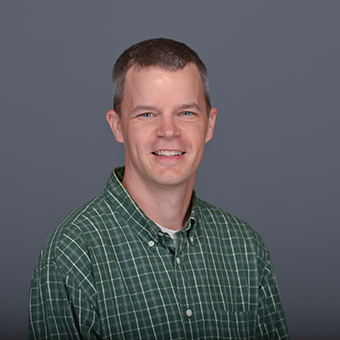
If you’re contemplating cutting through a block wall with a hammer and chisel, a powered rotary concrete saw becomes pretty appealing. That’s the sort of upgrade that Dr. Jeffrey Johnson of the Hope College chemistry faculty is hoping to provide to organic chemists by working in the developing field of carbon-carbon bond activation.
“We’re seeking to generate a new tool, a more efficient process, rather than a new product,” said Johnson, a professor of chemistry.
Building on Johnson’s previous work, the project has received a three-year, $275,855 grant from the National Science Foundation that will provide support from September 1 of through the end of August in 2021.
Johnson explained that carbon-carbon bonds can be thought of as the framework holding organic molecules together. When the bonds are broken apart, the pieces can be combined with other fragments to create new molecules — meaning combinations previously unknown. That matters because those previously unknown molecules can have previously unknown properties and applications — potentially, for example, in new medicines.
The problem with breaking carbon-carbon bonds, Johnson said, is that they are exceptionally strong, the organic-chemistry equivalent of the hypothetical block wall with which this story opened. While breaking these bonds is possible — Johnson and his team, among others, have been doing so — developing a practical method hasn’t been easy for anyone.
“It’s really challenging on the front end,” he said. “When I came to Hope in 2007, my group was one of only about five groups worldwide working in this area. There are many more now, but breaking these bonds in a constructive way is so difficult that it has yet to be used in a commercial process.”
Johnson’s team, which typically includes about 10 Hope students, is focusing on developing new methods for breaking and transforming these bonds. New methods will mean that more molecules can be developed for the same amount of effort, and thus more can be studied — ideally, to reveal useful potential applications.
In addition to developing new science, Johnson is focusing on student development. He was drawn to the college because of Hope’s emphasis on teaching by involving students in collaborative research with faculty mentors, and appreciates the opportunity to help students learn not just the what but the how of science.
The learning through the project, titled “RUI: Carbon-carbon single bond activation as a route to new organic transformations,” is also reaching students beyond his laboratory. For example, Johnson and his students have been passing along the new molecules that they produce to others at the college for additional study.
“We teach students how to make molecules in the research laboratory, and these same students can then learn how to test the same molecules in a cell biology class. This way they can get a feel for how the whole process works,” he said.
Johnson has mentored more than 70 students in research at Hope, with 28 serving as co-authors of articles published in professional journals. Six of his students have also received recognition from the Barry M. Goldwater Scholarship and Excellence in Education Foundation program, and seven through the National Science Foundation Graduate Research Fellowship program. Students in his organic chemistry courses have averaged in the 90th percentile nationally on the American Chemical Society’s (ACS) standardized exam for organic chemistry.
He has received multiple national honors for both his research and his role as a mentor, including election in 2017 as a Fellow of the prestigious American Association for the Advancement of Science. He has received more than $1.5 million in external support since coming to the college.